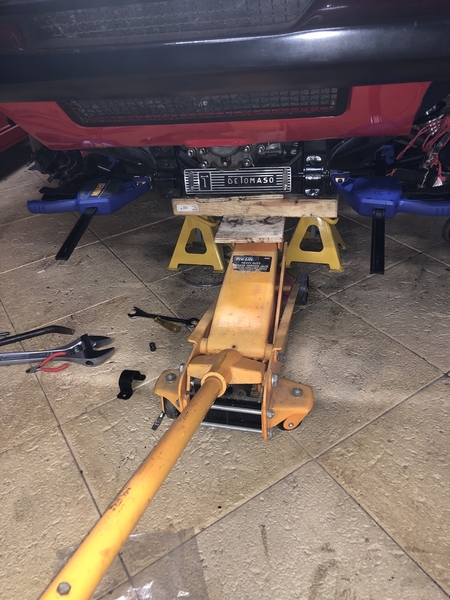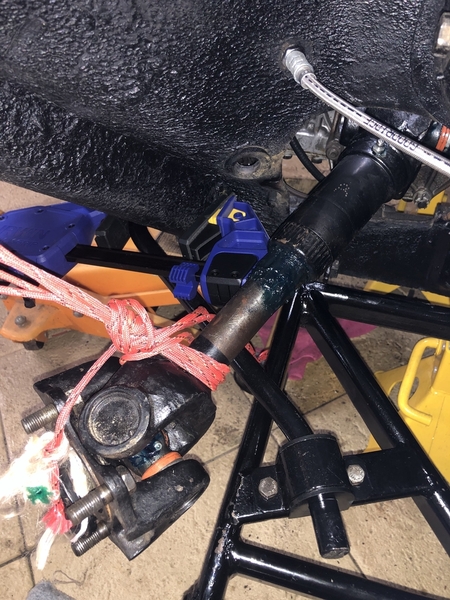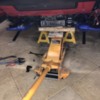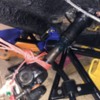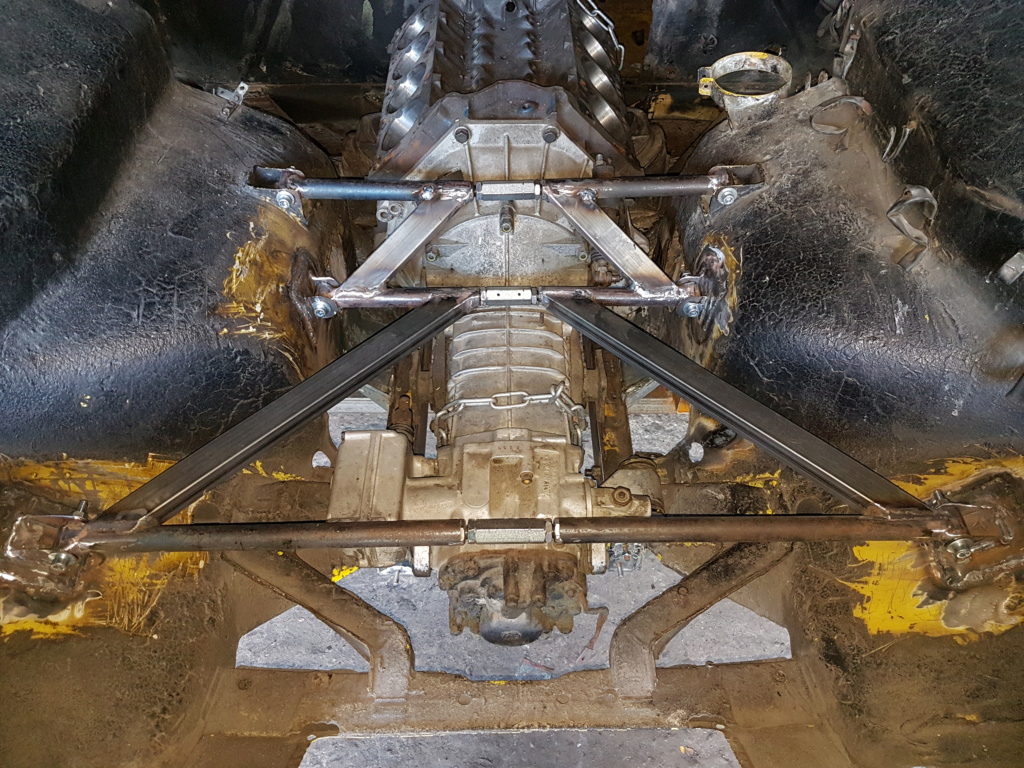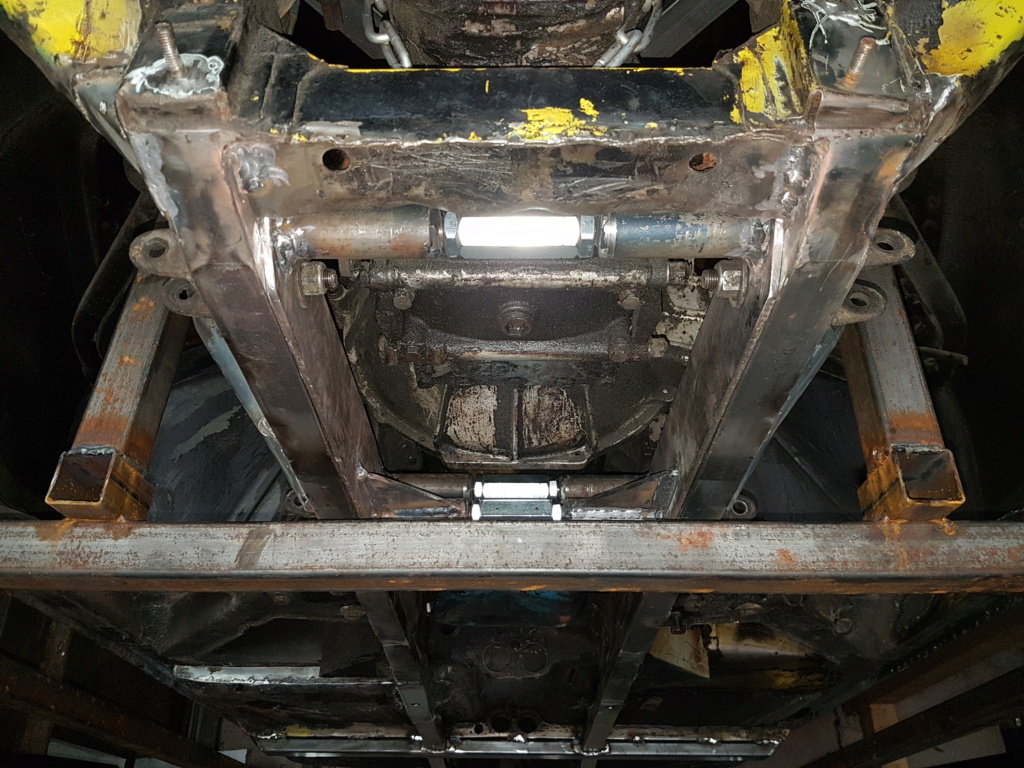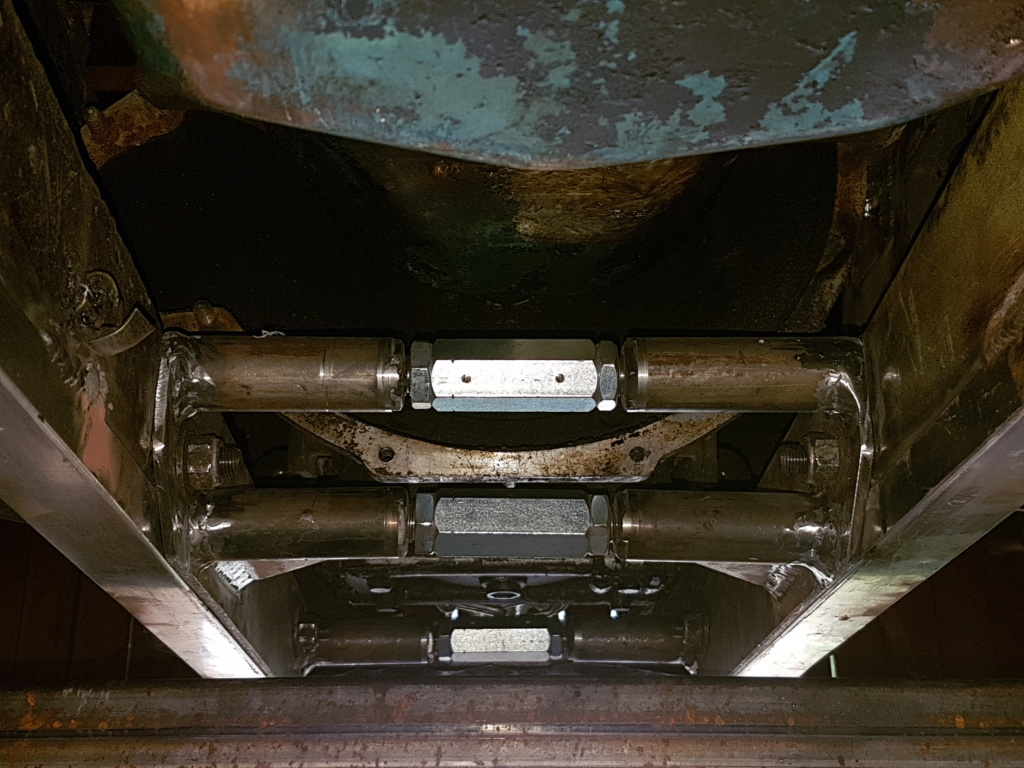Percy, as I remember it, the rear crossmember is made of several pieces of sheet metal somehow welded together. Any squeeking may be bushings, or maybe the crossmember parts moving! Certainly a one-piece crossmember would be better. In a test done in the last century, we laid out a skid pad circle, then ran our Pantera with several swaybar sizes, all with rubber bar ends. Stock, then GTS, then 1" solid. The worst was the stock, the GTS was noticably better and the 1" aftermarket bar was similar to the stock bar! Tried the 1" bar on a GT-5 with 13" wide rear tires and got the same results. We finally decided the 1" solid bar was stiffer than the rear crossmembers, so the whole rear end was flexing during heavy cornering with that bar! Decades later, I found this was not so when using a slightly weaker hollow 1" bar.
Using rubber on the bar ends causes severe distortion of the rubber and subtracts from whatever benefits the swaybar provides. Using much stiiffer poly bushings on swaybar ends often causes the steel mount on the a-arm to flex, then crack due to lack of poly-compliance. Thats why the sphere-ball ends are such a good idea. I use them on both front and back, on the bar ends. I use poly in the middle where they act simply as slightly compliant pivot bushings.
As for the upper bay-brace, in my opinion the Hall straight adjustable bar in black steel with long ends is best at bracing if not as pretty as others. The u-shaped bracket the bar fastens to is actually a weldment, part of the rear shock top, so a bar that has an end which protrudes far into the bracket will transfer cornering loads best. When a bar like that is inserted, the small bolts only keep it in position and the bar itself takes & transfers cornering loads to the shock, upper a-arm & rear upright. As-stock, the weldment tabs flex and with monstrously oversized stock bolt-holes, the bolts move around as well. You can see this from paint worn away around the stock bolt & nut.
I found that this type of adjustable bar can not only brace best, it can actually compensate for a rear suspension that's "settled" into excess camber! The key seems to be to NOT attempt to preload it enough to take out ALL SUBFRAME DISTORTION AT ONCE! Impatiently doing this can warp the rear body panels. My 'method' is to preload the adjustment only a little and drive the car a dozen miles or so, let it relax, then add a bit more preload the next day and drive it some more.
Continue this over a week or so until the rear wheel alignment is in the stock range, then periodically check rear camber for further distortion. Slow adjustment allows the rear alignment to be 'teased' back into good working order without bad effects. Our car had popped spot-welds and excess camber in 1998. I teased it back into zero camber over a week or so. Since then, it has not moved much. It won't perform miracles but can readjust for some settling.


